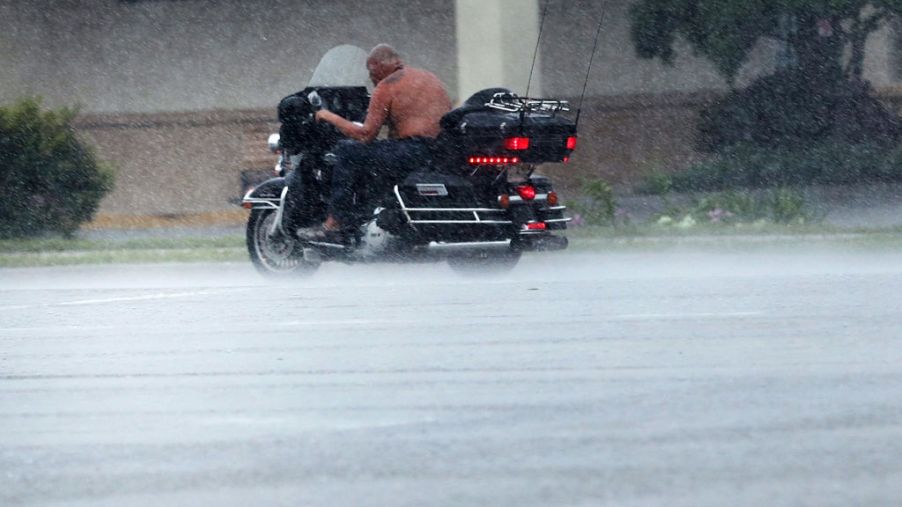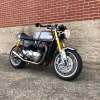
The Safest Way to Ride a Motorcycle in the Rain
Motorcycle safety is one of the most important factors of being a motorcycle rider. But when the road is wet, suddenly motorcycle safety becomes even more important. Unlike other vehicles, motorcycle riders are less protected and must take special care when it’s raining. But with the right precautions and defensive skills, riding in the rain doesn’t have to spell disaster. Here’s how you can safely ride your motorcycle in the rain.
How the rain changes your ride and how to prepare for the rain
When it rains, the road obviously gets wet. The wet road can cause a variety of problems, especially with grip. Not only does it make gripping the surface of the road generally harder, but when it rains, other substances from the road are lifted to the surface.
According to Ride Apart, rain makes other parts and sections of the road more difficult to handle as well, like reflectors, tar snakes, paint, manhole covers, steel plates, and more. Once water hits the road, your grip levels are going to automatically decrease and you won’t be able to brake or accelerate as normal.
So when you’re hitting the wet and rainy road, you’ll need to be prepared. Your tires should have good tread because the tread on your tire works to remove the water from between your tire and the road. Be sure your ‘slick’ tires stay home in the rain. And in the rain, your gear is essential.
If you’re not prepared, you are not able to drive to the best of your abilities. Your wearable gear should be not only waterproof but also able to increase visibility for yourself and others. Invest in reflective gear and accessories that will keep the rain from obstructing your view. According to Bike Bandit, you may consider investing in quality goggles and gloves that are designed to withstand the rain.
Things to look out for when riding in the rain
Don’t ever attempt to go through fast-moving water on your motorcycle. You won’t be in control of your motorcycle and flooded roadways can lead to serious problems.
Even puddles should be avoided since you don’t know what is hiding underneath. You should also try to avoid any surface that’s shiny-smooth, because the shinier they are, the slicker they will become when wet.
When approaching intersections, use extra caution. Not only will other vehicles have longer braking distances, but other substances in the road like oil will become more of a hazard when wet.
Tips for riding a motorcycle safely in the rain
Drive defensively: You and your motorcycle aren’t the only ones on the road that are affected by the rain. Water reduces grip and brake-time for every vehicle, but crashing in a motorcycle can have more dire consequences. When it’s raining, be even more cautious around other vehicles and keep your distance to ensure you have plenty of braking time. Remember: look ahead, plan ahead.
Go slow: Not only does slowing down and allow you to drive defensively but it also requires less of your tires and their grip levels. By taking things slow, you can decrease your braking distance and have time to access other factors on the road.
Brake properly: If you start to hydroplane in the rain, your first instinct may be to slam on the brakes, but that will only make things worse. Instead, put pressure on your footpegs, relax your grip on the bars a bit, and slow down on the throttle, until you regain your grip.
If you get stuck having to ride through deeper water, it’s imperative that you stay upright and steady. Instead of riding your brakes or slamming on the throttle, it’s best to get through the water with steady momentum. According to Twisted Throttle, you should never cling to your bars, which will exaggerate any movement you make.
Find a dry line: According to Cycle World, if you see a dry lane to use, you should use it. When there is a lane or area of a lane that is dry, use that space to ride on. Dry pavement will offer you much better traction and maneuverability. If there is an opportunity to stay away from the wet pavement, take it.


